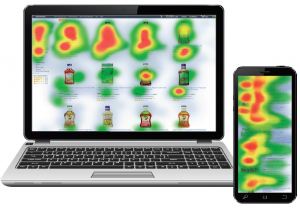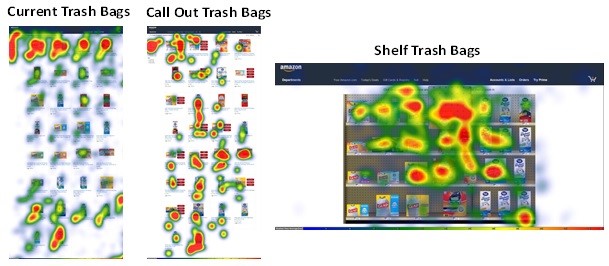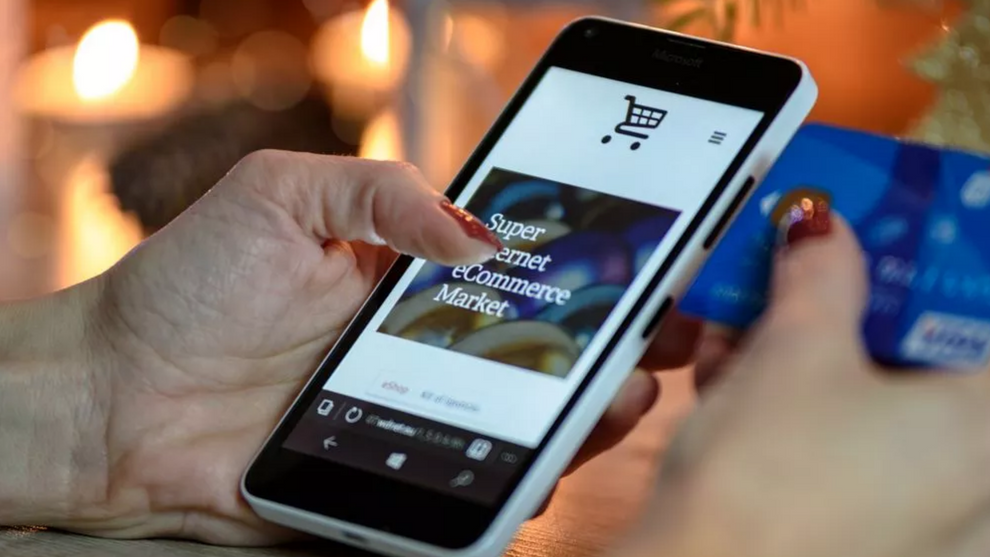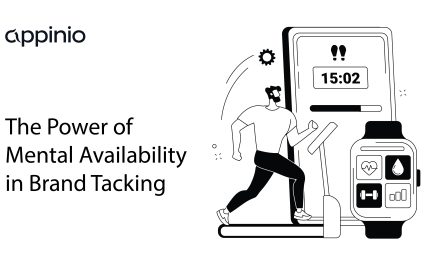The explosive growth of online shopping has revolutionized the world of retailing. However, while e-commerce has thrived in many areas (travel, technology, apparel, books, etc.), online purchases of consumer packaged goods (CPG products) have remained limited. In the U.S., recent e-commerce sales were only 2% of all CPG sales.
In studies at PRS IN VIVO, we have discovered a surprising barrier: the e-commerce shopping interface.
The tile approach of displaying single items may be well-suited to books and electronics but it does not work well for CPG products. Because when people buy groceries and other low-engagement items, they are making much faster decisions, based on what’s familiar; and they like to compare and contrast items in order to choose – which is harder to do online.

Through our eye-tracking studies, we document how shoppers navigate when shopping online:
- When using a desktop computer, shoppers focus almost entirely on the top third of the page;
- On mobile devices, visibility drops dramatically past a few scrolls.
These results in grabbing what is seen first – and that may not be the desired product. It could be the wrong type (such as the whole bean instead of ground coffee) or size (as package visuals can be misleading).
With these challenges in mind, we tested 3 different shopping interfaces to examine their impact on shopper behaviour and purchase patterns in different categories:
- The existing Amazon site layout with individual packaging images (thumbnails) that match those found in physical stores.
- A modified version, in which test products also had text “call-outs” highlighting key information.
- An alternative display, in which products appeared in a simplified shelf set (with single facings of each key SKU), more akin to that found in a brick-and-mortar store.
![]()
From eye-tracking, it was learned that both test scenarios favorably impacted the shopping experience, as shoppers engaged more extensively and viewed more products.

The shelf display also improved perceptions of the shopping process as people felt that it was easier to shop, to find the right product and to differentiate products within complex product lines.
The impact of the call-outs was more mixed between categories we tested and tends to work best for packages that have a great deal of feature/benefit copy on them.
As Millennials and Gen Z take over household grocery shopping, it is inevitable that e-commerce for CPG will continue to grow. Certainly, purchases are already being influenced by digital engagement (recipes, reviews, etc.), even if not the actual buying.
To fully capitalize, marketers will need to explore partnerships, technology solutions and new approaches to the shopping and fulfilment experiences.
Marketers and retailers who continue to pursue and refine these new paths will help accelerate the transition of CPG to e-commerce – and gain market share for their brands.
It’s not about a magic bullet – not any one thing alone, be it price or availability or social responsibility; it’s about the collection of things that make the shopper’s experience great.
Doing so may require something different for different shoppers or at different times for the same shopper. But it’s essential to hear them, watch them and understand them.
And then, cater to their needs and wants – which will continue to evolve.
Learn more by reading the full article, “Overcoming the Hurdles of E-Commerce”.
Editors note: PRS will be speaking and exhibiting at the upcoming MRMW North America conference on April 24-25 in Cincinnati, Ohio. Join Matt Salem and his team and learn about their latest research methodologies for ecommerce industry.











 by
by 
